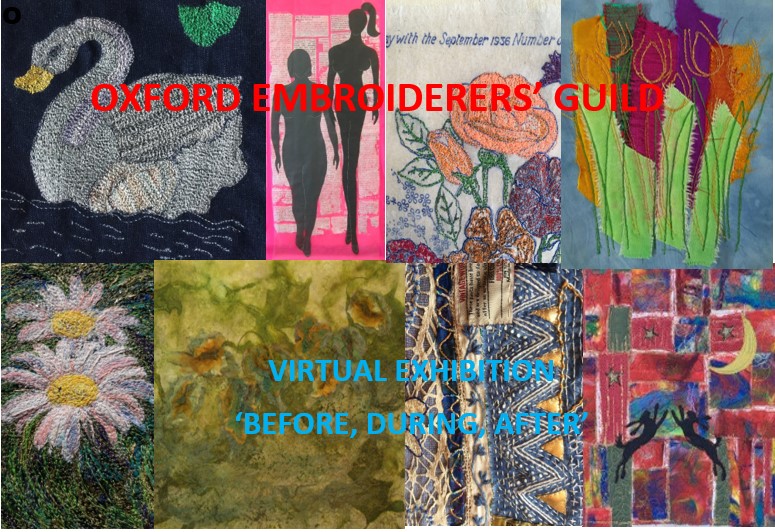Ann Giffiths is well known among our branch members, as is the
Designs for Life art/science collaboration that was the focus of much of her talk. For those of us who knew nothing about the project, Ann explained that it was funded by
The Wellcome Trust, and co-ordinated by
The Oxford Trust in collaboration with
Diamond Light Source,
Oxfordshire Women’s Institute, and
Oxford and Cherwell Valley College.
Diamond Light Source is the UK’s national synchrotron science facility, located at the Harwell Science and Innovation Campus in Oxfordshire. In their own words, "By accelerating electrons to near light-speed, Diamond generates brilliant beams of light from infra-red to X-rays". I won’t pretend to understand the science of this but fpr me to simply say that they produce pretty pictures of tiny things like viruses, cancer cells or molecular structures would totally trivialize the importance of their work.
Ann designed 30 panels based on viruses and diseases chosen by the members of the WI who would stitch them. The stitchers also chose how to interpret the designs and incorporated many different techniques, including hand embroidery, machine embroidery, appliqué and patchwork. Tatting, knitting and crochet all feature on the panels, as do Suffolk puffs and Dorset buttons.

Stitched sample, courtesy of Anne Griffiths
One panel consists almost entirely of cross stitch. In order to include as many contributors as possible this panel went 'on tour' and everyone it met was invited to add their 'X'. Another panel comprises circles that the scientists at Diamond Light were encouraged to embroider themselves.

Stitched sample, courtesy of Anne Griffiths
To unify the panels, a batch of threads and fabrics were dyed and each group was required to use these for at least 80% of the panel. They were then allowed to add anything of their own choosing to give a unique flavour to their chosen design.
Ann showed pictures of every panel (they can be viewed on the
Designs for Life blog) and described the thought processes behind each one, pointing out some of the unique details or techniques that the groups had added. Ann brough with her some of the many samples and practice pieces.

Stitched sample, courtesy of Anne Griffiths
The whole project was extremely interesting. While nothing can be taken away from the wonderful artwork that the Ladies of the WI created together with Ann, from the point of view of the Guild it has to be seen as disappointing that anyone would turn to the WI before the Embroiderer’s Guild when proposing a textile art project. It makes me wonder how we can raise our profile an become the first organisation that springs to mind when thinking about textiles.
Ann then told us about the projects that she had been involved in since Designs for Life. The first was a follow on project for
Designs in Life as one of three
artists in residence at Diamond Light Ltd.
A year of research and study led to a series textiles printed with iron filings in magnetic patterns including three stainless steel sculptures made in collaboration with Paula Groves.
Next came a new collaboration with Diamond Light and Evotec to create
The Largest Diffraction Pattern in the World. Inspired by the cross stitched panel in the ‘Designs for Life’ project, this project would be a 3m x 3m textile hanging depicting protein crystals discovered at Diamond. Eventually over 5000 people would contribute a cross to the background of the textile piece.
Just as that project came to a close, Ann received a very unusual invitation participate in a project to create
bier covers for the Viewing Rooms, formerly known as mortuaries, at Frenchay and Southmead Hospitals for North Bristol HNS Trust. The brief was for secular pieces that were to convey a feeling of value, respect and care for the deceased.
Ann’s designs compliment those already chosen for the large windows of the Viewing Rooms created by Cardiff based artist, Judy Foote. The colours were chosen to tone with the swatches of paint and materials used for walls, sofas etc.

Stitched sample, courtesy of Anne Griffiths
Ann closed her talk with a brief look at her latest venture,
designing bespoke fabrics for interiors.

Stitched sample, courtesy of Anne Griffiths

































